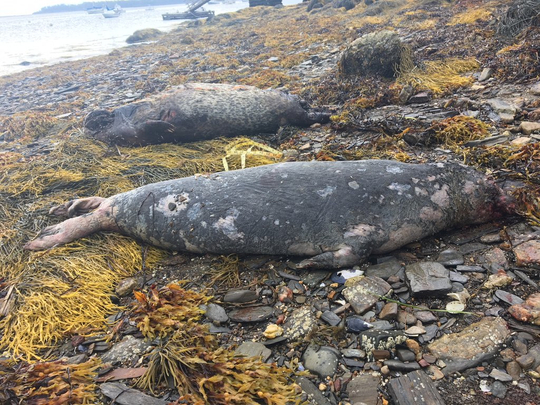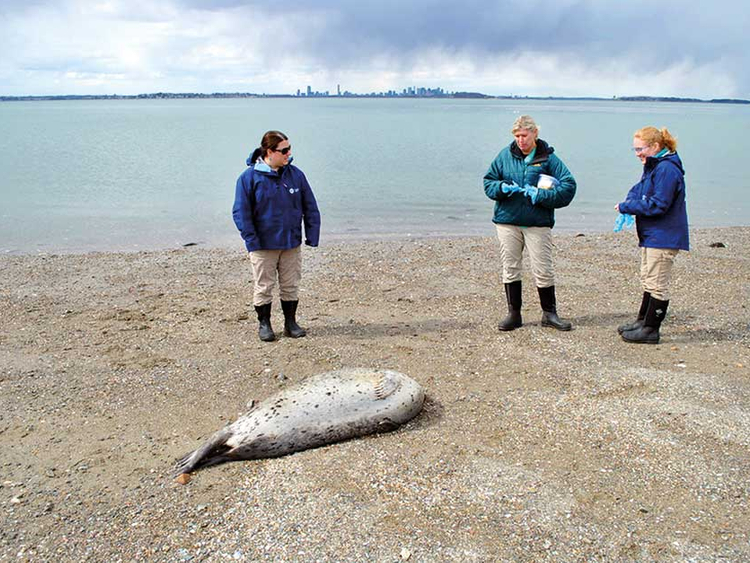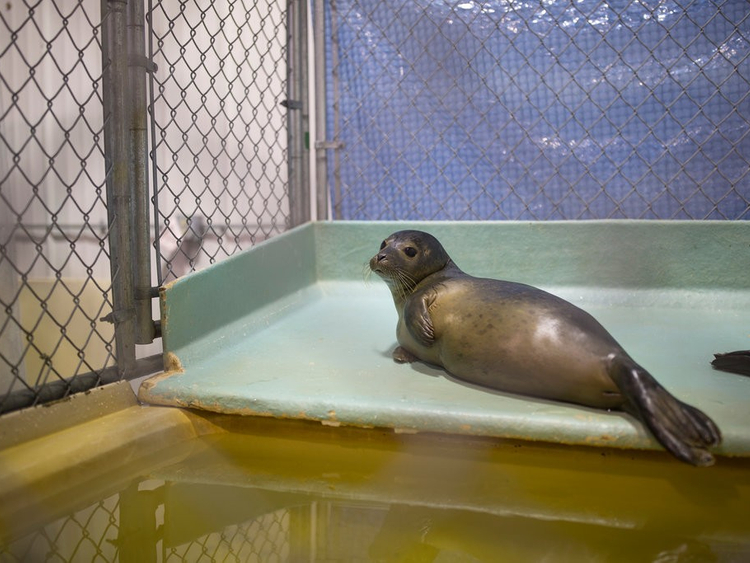
Harbour and grey seals are dying by the hundreds from southern Maine to northern Massachusetts, apparently from a combination of a measles-like illness and the flu.
Late last month, the federal government declared the summer’s toll on seals an “unusual mortality event,” meaning federal resources would be provided to help understand and cope with the deaths.
Teams have responded to more than 600 reports of dead or dying harbour and grey seals, but there are probably more that have gone unreported or washed up on private property, said Mike Asaro, chief of the marine mammal and sea turtle branch of the National Oceanic and Atmospheric Administration (NOAA).
“The total could be up to 1,000 at this point. We just don’t know,” he said.
Marine mammal stranding agencies always expect to find some sick and deceased animals this time of year, as a percentage of newborn pups fail to thrive after weaning. But the carcasses washing up on New England beaches reveal an epidemic that’s touching all ages, said Katie Pugliares-Bonner, a senior biologist and necropsy coordinator for the New England Aquarium in Boston.
“That’s one thing that was largely concerning — not only the volume, but the variety of age classes,” she said.
Although research is still underway, the disease outbreak appears to be centered on the Isles of Shoals, a small group of islands off the coasts of southern Maine and northern New Hampshire, Pugliares-Bonner said.
Animals are suffering from phocine distemper virus, which is closely related to canine distemper in dogs, and a cousin of the measles, said Tracey Goldstein, a professor at the University of California, Davis, and a member of NOAA’s unusual mortality working group.
Infections, flu
Phocine distemper causes lung infections and seizures as it attacks the seal’s brain tissue. Some animals have washed up on beaches still alive, but lethargic and coughing, she said.
Some of the seals have also been found to have the flu, though it’s not clear whether the compound infections are killing them, or whether the distemper is reducing the animals’ immunity and making them vulnerable to the flu, Goldstein said.
Birds are the main source of the flu, and seals in the region have caught the flu from passing birds before. But researchers haven’t yet confirmed the origin this time.
Infections are more likely to spread at this time of year, when the seals are living in close quarters as they nurture their babies on the beaches, she said.
Both infections have been detected in seals on the East Coast before, Goldstein said, although not at the same time.
In 2011-2012, an influenza outbreak killed about 780 seals from Maine to Massachusetts, and in 2006-2007 about 1,500 seals from Maine to Virginia died from phocine distemper, according to data from previous mortality reports.
At this point, scientists say they are not overly concerned about the risk of the viruses spreading to other animals.
But people should keep their distance from carcasses and injured animals, and keep their dogs away as well, said Lynda Doughty, executive director of Marine Mammals of Maine, which handles strandings in Southern Maine.
It is theoretically possible though unlikely for viruses to jump species, Goldstein noted, and dogs have been known to give distemper to seals, though the opposite has not been seen.
400 stranded animals
“It’s hard when you see people intervene with animals that are not doing well,” said Doughty, whose team has responded to more than 400 stranded animals over the last month, including 30 on September 2 alone.
“It’s the ones that show up on populated beaches that you feel bad for. The stress of having people around is not really helpful.”
Although her Massachusetts stranding team has seen fewer dying and dead animals this week than last, Pugliares-Bonner said September is usually their busiest month, as more pups are weaned and the seasons change.
“I don’t think we’re in the clear yet,” she said. “I’m worried that we’re at a small plateau and we might see another peak — but it’s hard to say.”
Both harbour and grey seals have been faring well in recent years and neither species is endangered, Goldstein said.
“It’s really sad when you’re seeing large numbers affected and dying, but in the long-term, the population should recover,” she said.














